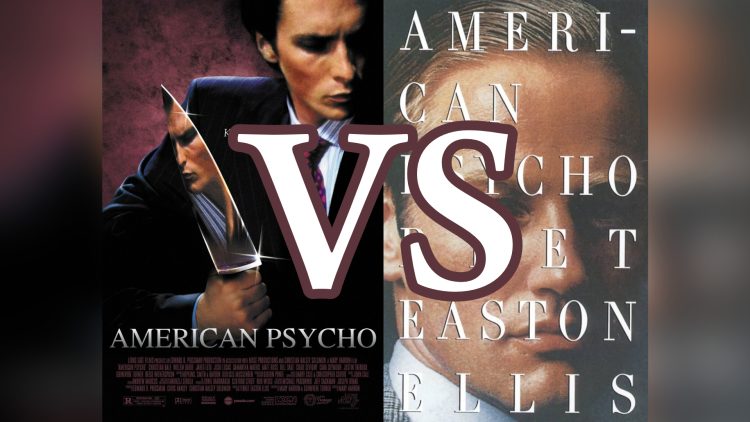We recently reviewed the 2000 film American Psycho, director Mary Harron’s adaptation of the 1991 novel by Bret Easton Ellis. Set in late 1980s New York, it satirizes the wealthy young investment bankers and traders who embodied Wall Street’s greed culture during that era’s financial boom.
Note
The following is an editorialized transcript of the podcast episode about the American Psycho book adaptation. If you would like to listen to the podcast, click the play button above orlisten on your favorite platform with the links below.
What is American Psycho about?
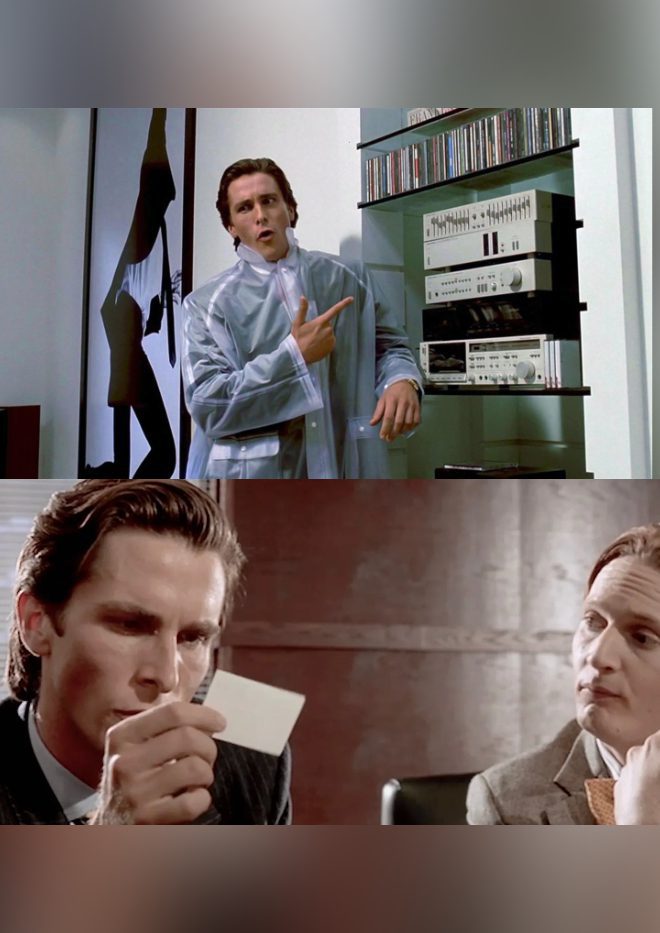
The story follows Patrick Bateman, an obsessively materialistic vice president at the fictional firm Pierce & Pierce. Christian Bale delivers an unsettlingly committed performance as Bateman, whose lifestyle of expensive restaurants, designer suits, and philandering masks his psychopathic tendencies. We found Bale’s intense preparation legendary – he drastically altered his physical appearance and remained in character even off-camera.
The opening scenes show how shallow and interchangeable Bateman’s crowd of colleagues behave. Their primary focus is one-upmanship over trivial status symbols like demanding restaurant reservations and scrutinizing each other’s nearly identical business cards. This vacuous existence leads Bateman into deeper depravity and violence when confronted with perceived slights.
We were struck by how the film uses dark humor to offset Bateman’s horrific crimes, creating an unnerving tonal dissonance. For example, during his infamous murder of colleague Paul Allen while Huey Lewis plays, Bateman rants about the band in a way that’s both disturbing and inadvertently comedic. These darkly funny moments prevent us from simply writing Bateman off as a monster.
The storytelling deliberately keeps us off-balance about what is real versus Bateman’s skewed perspective as an unreliable narrator descending into psychosis. We found ourselves frequently questioning whether the brutal acts we saw occurred or were just his fantasies. This ambiguity adds to the overall disorienting experience.
A Modern Look at Americana
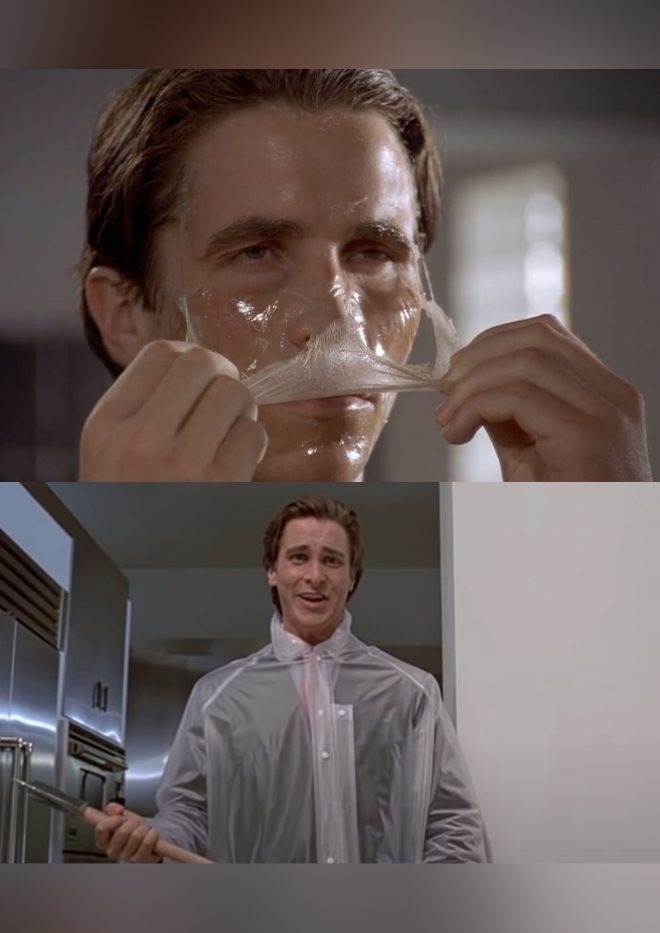
We appreciated how the screenplay by Harron and Guinevere Turner deftly satirized the era’s misogynistic male culture. Bateman routinely demeans and brutalizes women, yet his wealthy young professional crowd largely ignores or minimizes his reprehensible behavior. His fiancée Evelyn, played by Reese Witherspoon, aspires only to be a materialistic status symbol rather than challenging his toxicity.
RelatedEssential Americana Reads: 10 Novels That Tap Into The Spirit of Americana
The Setting
The visual aesthetics perfectly capture 1980s American excess, from the stark, sterile production design to Bateman’s obsessive morning grooming routine involving multiple skin creams and facial masks. We noticed insightful background details too, like a misspelled word on a Pierce & Pierce business cards hinting at the employees’ incompetence beneath the superficial glamour.
While initially receiving some backlash for perceived misogyny, we believe American Psycho has aged as a remarkably prescient takedown of unchecked narcissism, entitlement, and privilege among the elite. Bale’s utterly chilling performance as the impeccably groomed yet soulless Bateman earns him a place among cinema’s great unreliable narrators and dark anti-heroes.
We continue our in-depth discussion of the film, covering more key scenes and analyzing the deeper themes. Patrick Bateman’s descent into psychosis escalates as the story progresses. We see him commit increasingly horrific acts of violence, yet the film maintains a darkly comedic tone by having Bateman remain totally detached, almost oblivious to his own depravity.
The Characters
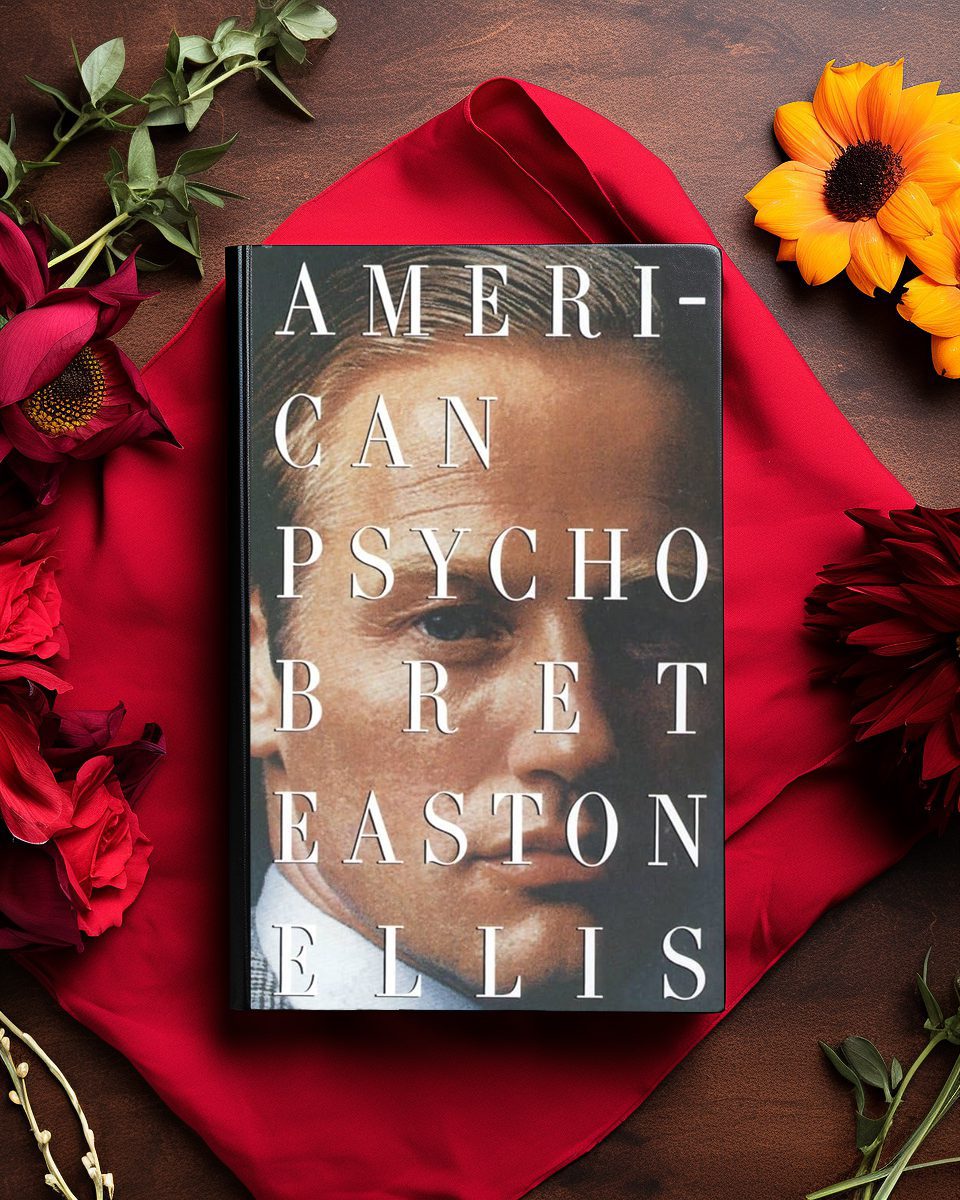
American Psycho
Google Books Preview:
Author:
Bret Easton Ellis
Published:
06/09/2010
Genre:
Publisher:
Vintage
Number of pages:
418
ISBN:
9780307756435
A notable example is when he aggressively pursues two sex workers, Christie and Sabrina, eventually luring them back to Paul Allen’s apartment. While the actual violence occurs off-screen, we are left to imagine the brutality Bateman inflicts based on the victims’ battered appearances afterward. Christie’s terrified attempt to escape, discovering the apartment littered with mutilated bodies, creates an intensely disturbing sequence.
The infamous chainsaw scene exemplifies the film’s tonal dissonance – Bateman chasing Christie while wearing only sneakers and clutching a roaring chainsaw is simultaneously chilling and absurdly comical. We can’t help but be appalled at his actions yet also find humor in the sheer outrageousness of his behavior.
As the story continues, we increasingly question what is real versus Bateman’s delusional psychotic break. Scenes like him trying to stuff a stray cat into an ATM or surviving outrageous gun violence make us doubt the plausibility of events. His lawyer Harold dismissing his lengthy confession of murders as a joke further blurs the line between fantasy and reality.
RelatedCormac McCarthy’s Revelations of Americana’s Dark Side: Exploring the Unseen
This purposeful ambiguity is a key part of the novel and film’s critique of societal shallowness. Having those closest to Bateman be utterly indifferent and unable to see his true nature exposes their moral blindness. The repetitive scenes of the Wall Street bros obsessing over insignificant status symbols like business cards or restaurant reservations juxtapose chillingly against Bateman’s heinous crimes.
We appreciated the camerawork and direction emphasizing this point. Simple choices like never definitively depicting which of Bateman’s associates is which reinforce how interchangeable they are. The frequent mistakes over his own identity sidebar his existence as a non-entity despite his wealth and privilege.
The character of Jean, Bateman’s secretary, serves as a compelling counterpoint to those willfully ignorant. As one of the few kind, sincere souls he encounters, her empathetic nature makes Bateman’s considered choice to spare her life intriguing. Could he not bring himself to brutalize one of the only people unafflicted by the moral decay surrounding him?
In the end, Bateman’s killing spree may be real, imagined, or somewhere between – but its larger point is conveyed. He morosely laments how despite his depraved actions, they haven’t allowed him to break free from the shallow, soulless conformity poisoning 1980s America. The “psycho” refers not just to him but to the rampant unchecked hedonism and greed devouring society.
RelatedWhite Picket Fences: 5 Best Novels About The American Dream
Our Take On It
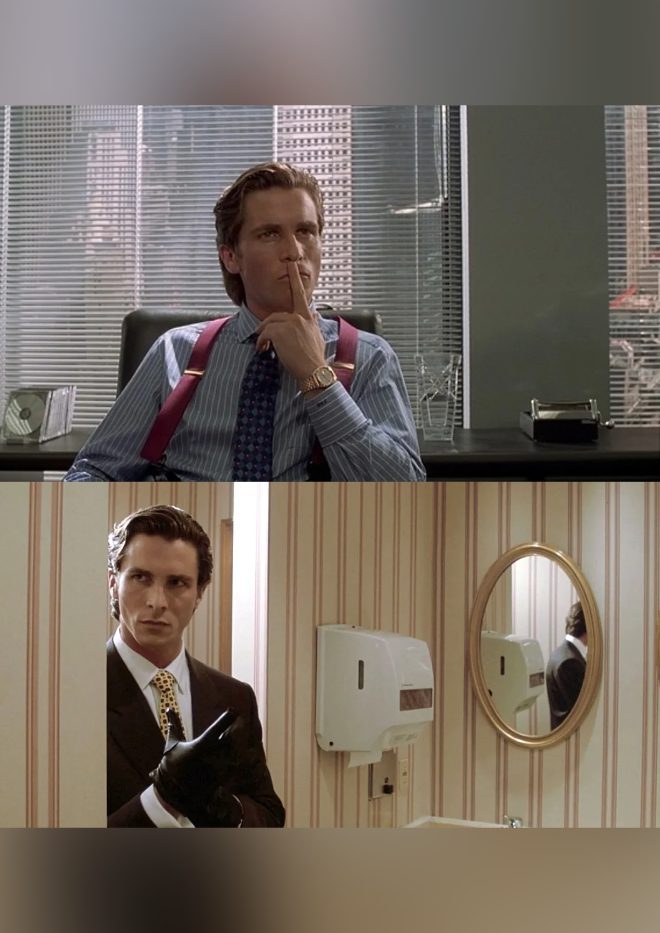
By maintaining an ambiguous approach to its violence while fully embracing its satire of America’s ritualized materialism, the film American Psycho delivers a powerfully disturbing cultural critique. It uses the chilling immorality of its antihero to hold a mirror up to the collective sickness festering beneath 1980s societal excess. Patrick Bateman may or may not literally be a serial killer, but he is presented as an apt personification of the “psycho” ethics plaguing America itself during this period.
Enjoying this episode? Be sure to check out all of our coverage of the genre over at https://fully-booked.ca/. We’re a listener-supported podcast! Please consider pledging and helping Fully Booked to grow our library over at https://ko-fi.com/fullybooked, or by leaving us a 5-star rating and review wherever you’re listening. Thanks, bookworms, and don’t forget to keep on reading!

